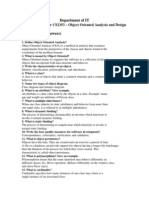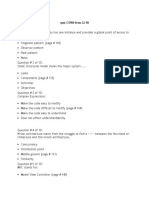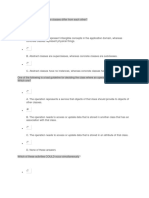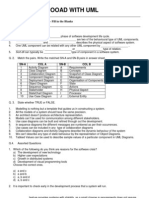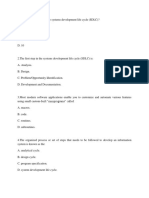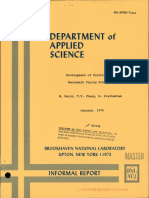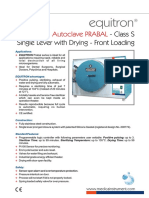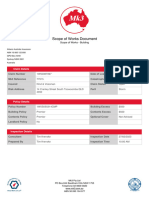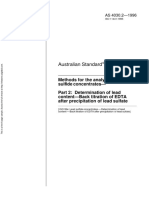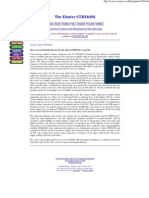0% found this document useful (0 votes)
66 views5 pagesOoad Test With Ans
The document consists of a series of multiple-choice questions related to object-oriented programming concepts, methodologies, and UML diagrams. It covers topics such as polymorphism, encapsulation, inheritance, and various software development methodologies. The questions aim to assess knowledge on the structure and principles of object-oriented design and development.
Uploaded by
arpitCopyright
© © All Rights Reserved
We take content rights seriously. If you suspect this is your content, claim it here.
Available Formats
Download as DOCX, PDF, TXT or read online on Scribd
0% found this document useful (0 votes)
66 views5 pagesOoad Test With Ans
The document consists of a series of multiple-choice questions related to object-oriented programming concepts, methodologies, and UML diagrams. It covers topics such as polymorphism, encapsulation, inheritance, and various software development methodologies. The questions aim to assess knowledge on the structure and principles of object-oriented design and development.
Uploaded by
arpitCopyright
© © All Rights Reserved
We take content rights seriously. If you suspect this is your content, claim it here.
Available Formats
Download as DOCX, PDF, TXT or read online on Scribd
/ 5
















